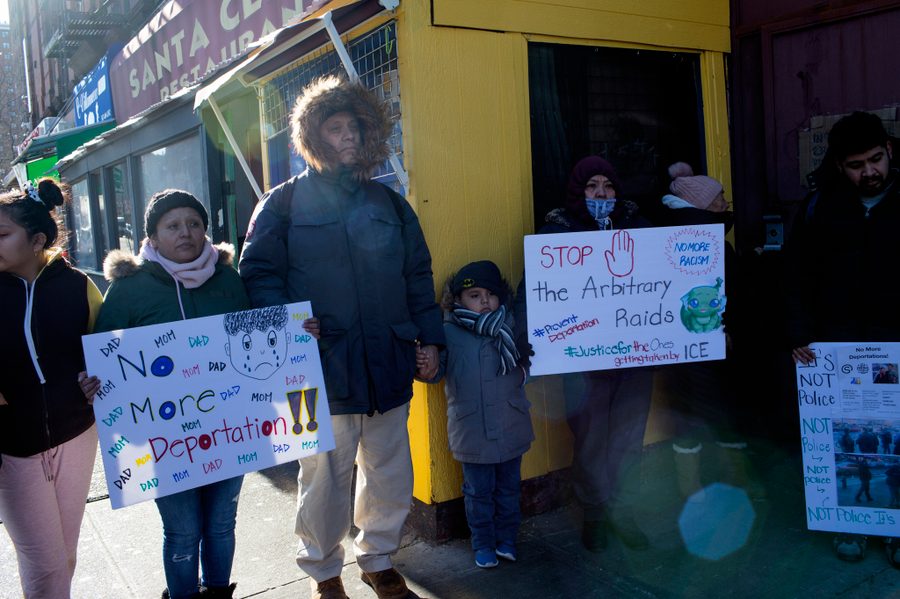Immigration Policy Doesn’t Have to Be This Way
For 20 years, the Department of Homeland Security has made life a nightmare for millions—but Dreamers like me have seen that there’s another way.
Alliyah Lusuegro

The Department of Homeland Security, or DHS, turned 20 this March. It was launched in 2003, right around the time I moved to the United States from the Philippines at age six. At the time, I didn’t yet know the impact this incredibly powerful department would have on my life.
DHS rolled nearly two-dozen federal agencies under one massive bureaucracy designed, essentially, to bring the war on terror home. In particular, its immigration enforcement agencies characterized immigrants as “criminal aliens” and explicitly designated us a national security threat.
Once I got to the United States, I loved my life as a new American. I learned English quickly, read TIME magazine for kids, and embraced my new red, white, and blue terrain. In those early post-9/11 years, I even shared the belief that strict immigration enforcement was necessary to protect our country from outside “others.”
It hadn’t occurred to me then that, as a child whose family overstayed a tourist visa, I was one of those “others” too. But gradually, that reality became all too clear.
As I grew up, I watched news of ICE raiding homes and separating families that looked a lot like mine. While my classmates traveled abroad for summer vacation, I stayed tucked away in my family’s Chicago apartment. Afraid of coming face-to-face with police or immigration authorities, I started to fear all authority figures — even my school principals.
My family felt it, too. We didn’t travel for the longest time, especially by plane. The mere thought of facing TSA was too scary.
But after a decade of living under this fear, in 2012 a new window opened: the Deferred Action for Childhood Arrivals (DACA) program, an Obama administration policy to help Dreamers like me stay in the country legally. I studied the qualifications and meticulously compared them to my life story. I checked all the boxes, and I applied right away.
In the decade since, I’ve seen both the good and bad of U.S. immigration policy.
On the one hand, I felt a sense of belonging among the 600,000 Dreamers who qualified for the program. I relished being able to drive a car and work a job as soon as I could.
As a high schooler I committed my life to learning, telling my story and advocating for immigrants. I even got to tell a packed audience at the 2013 National Immigrant Justice Center Human Rights Awards, including members of Congress and Supreme Court judges, that DACA changes lives for the better.
On the other hand, DACA wasn’t as secure as we’d hoped.
When Donald Trump was elected president in 2016, during my first semester of college, all I could focus on was my fear that ICE would take me away. This unease increased when Trump rescinded DACA in 2017. The Supreme Court eventually ruled that Trump didn’t end the program correctly and reversed his decision, but DACA still faces legal jeopardy.
Meanwhile, Dreamers must renew our DACA status and pay a hefty application fee at least every two years, and keep a squeaky clean record. We can only travel abroad for education, work or the death of a loved one.
Amid this insecurity, I’ve seen so much promise for a better system.
When Trump first established the Muslim travel ban in 2017, thousands of protesters roared across cities and airports all around the country. Coalitions like the Defund Hate Campaign have blocked nearly $12 billion and counting of federal funding to ICE and CBP, calling to reinvest those funds in vital programs for communities.
The vast majority of Americans continue to support a pathway to citizenship for undocumented immigrants. Still, our country has funneled $1.4 trillion into DHS over the past two decades. During that time, five million people have been deported. Countless others have been raided, assaulted, and imprisoned just for trying to escape war, poverty, or climate chaos.
Twenty years after the launch of DHS, what does security mean for the land of the free — and for a country of immigrants? Does it mean the gut-wrenching horrors of detention and deportation, or a path to lawful residency or citizenship?
This country deserves an immigration policy that makes us all feel secure. I’m a Dreamer whose only dream is to not be bound by walls, cages or borders. I want to exist freely — not have my right to live equated to my immigration status.
Alliyah Lusuegro is the Outreach Coordinator for the National Priorities Project at the Institute for Policy Studies. This op-ed was distributed by OtherWords.org.




